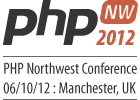Tag Archives: phing
First Phing Plugin
Skills Allied to PHP
 In October, I’ll be delivering a tutorial at the mighty PHPNW Conference which contains very little PHP. Why? Because I think, as developers, it’s our other professional skills that suffer. As a consultant, I work with lots of different teams, and it is very rare for code to be the problem (and the one time it was, it wasn’t the only problem!).
In October, I’ll be delivering a tutorial at the mighty PHPNW Conference which contains very little PHP. Why? Because I think, as developers, it’s our other professional skills that suffer. As a consultant, I work with lots of different teams, and it is very rare for code to be the problem (and the one time it was, it wasn’t the only problem!).
In web development, our biggest challenges are not writing code, we can do that. But getting the code safely from one place to another, with many people’s work preserved, having our platform(s) correctly configured and understanding how to use them, making use of the tools in the ecosystem which will help us improve the quality of our code; these are the big challenges we face, and that’s why I proposed this workshop and why I think all these topics are important. Continue reading
We Don’t Know Deployment: A 4-Step Remedy
So here’s my problem.
We dont know deployment. We work from same copy on one test server through ftp and then upload live on FTP.We have some small projects and some big collaborative projects.
We host all these projects on our local shared computer which we call test server.
All guys take code from it and return it there. We show our work to clients on that machine and then upload that work to live ftp.Do you think this is a good scenario or do we make this machine a dev server and introduce a staging server for some projects as well?
I wrote him a reply with some suggestions (and my consulting rate) attached, and we had a little email exchange about some improvements that could fit in with the existing setup, both of the hardware and of the team skills. Then I started to think … he probably isn’t the only person who is wondering if there’s a better way. So here’s my advice, now with pictures! Continue reading
Idiot-Proof Deployment with Phing
Once upon a time, a long time ago, I went onto a conference stage for the very first time and said that I thought I might be the world’s ditsiest PHP developer. I actually still think that is pretty true, and if you work with me then you will know that I mostly break and fix things in approximately equal measure. With this in mind, when I launched my own product recently (BiteStats, a thing to automatically email you a summary of your analytics stats every month), I knew that I would need a really robust way of deploying code. I’ve been doing a few different things for a few years, and I’ve often implemented these tools with or for other organisations, but I don’t have much code in production in my own right, weirdly. I decided Phing was the way to go, got it installed, and worked out what to do next.
Script for Database Patching at Deploy Time
My current project (BiteStats, a simple report of your google analytics data) uses a basic system where there are numbered patches, and a patch_history table with a row for every patch that was run, showing the version number and a timestamp. When I deploy the code to production, I have a script that runs automatically to apply the patches.
